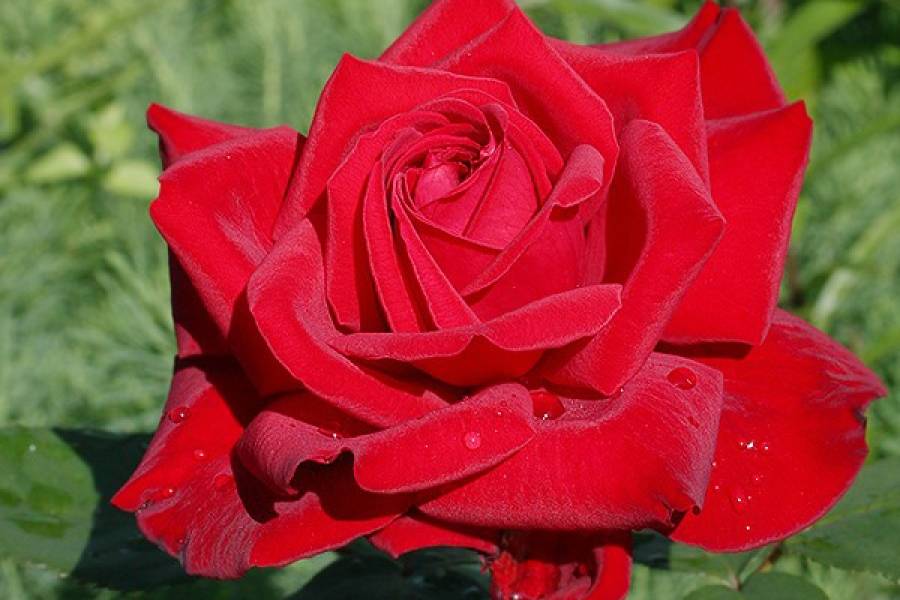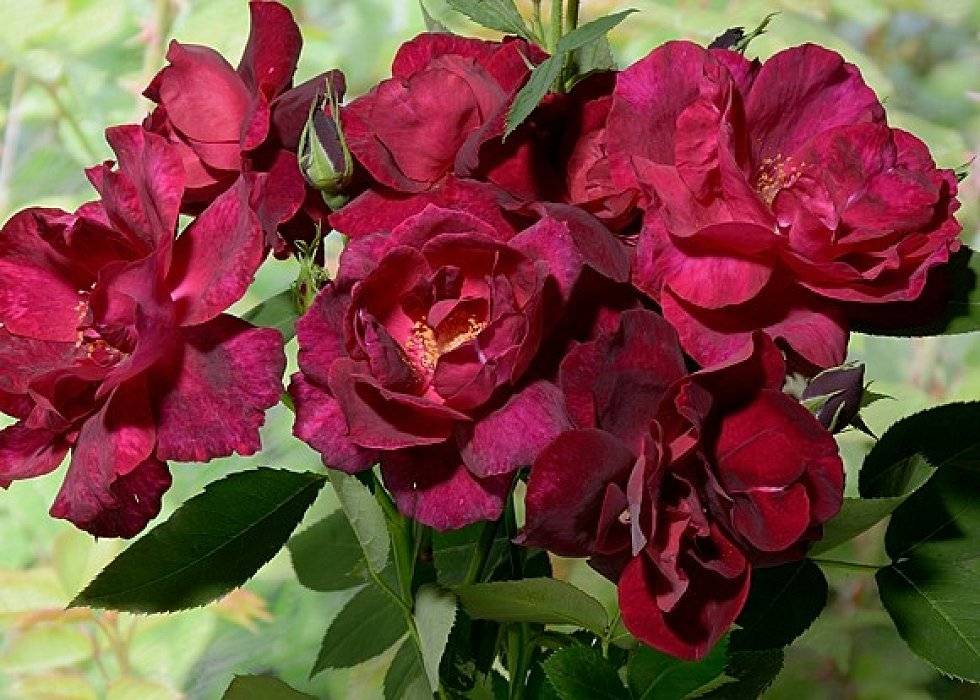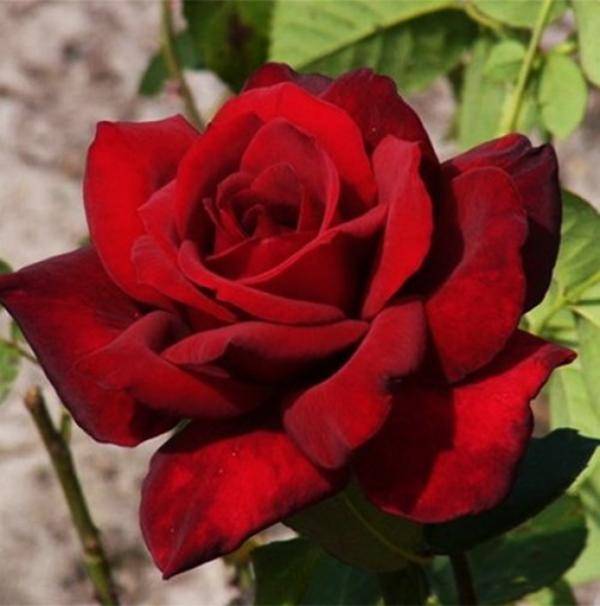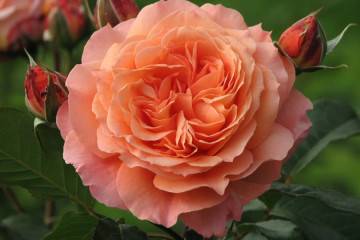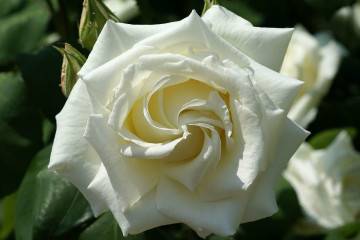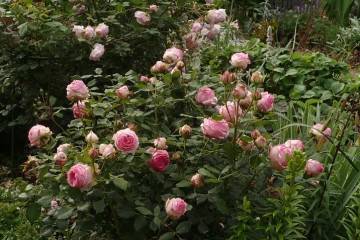Rose Burgund (Burgund) - characteristics and description
Content:
Growing large scarlet roses in temperate latitudes is not an easy task. Rose Burgundy will be an excellent solution, it has bright colors of lush buds. In the garden, these fragrant bushes will become the centerpiece. Erect, of medium height, they will be visible among other plants.
Description of rose burgundy
The hybrid tea rose Burgundy was bred by German breeders Cordes in 1981. It got its name in honor of the Burgundian tribe that inhabited Pomerania many centuries ago.
The height of the bushes reaches 80-100 cm, the stems are straight with sparse thorns. Leaves of a rich green hue have a leathery surface.
The description of this flower looks attractive - large lush buds reach 8 cm in diameter, rarely form inflorescences. Burgundy is a frost-resistant variety, rarely gets sick and tolerates bad weather well. With general unpretentiousness, it is demanding on the composition of the soil and sunlight.
Hybrid tea rose is actively used in landscape design. It is planted along pedestrian paths, near gazebos and walls of buildings. Due to the brightness of the buds, it looks good in flower-stone compositions.
Growing a flower: how to plant it in open ground
In the matter of planting Burgundy is scrupulous, you need to make an effort for a successful result. First of all, you need to determine the landing site. A small hill is suitable, where water does not accumulate, since the root system of roses does not accept stagnation. Rose bushes love the sun, so they should be planted on the south side. In this case, a light shadow is also suitable; the petals should not be burned.
Burgundy will not grow well in clayey marshy places, it needs fertile and light soil. Florists use ready-made material for planting: purchased seedlings, cuttings.
Step-by-step landing instructions:
- Prepare the seedling: remove weak or rotten shoots, shorten healthy ones.
- Place the rhizome for 2 hours in water, you can pre-stir the growth enhancer in it.
- Place gravel or other drainage (8-10 cm) in a hole 35-40 cm deep.
- Pour soil on top (5 cm).
- In the center, form an elevation, lay roots on it. Spread them out.
- Deepen the seedling by 2-3 cm.
- Cover the hole with soil and tamp a little.
- Drizzle.
Plant care
Burgund 81 is a rose that requires a special watering regime: 3 times a week, 5 liters for young plants and 8 liters for adults. You need to pour water at the root. It is not recommended to spray the bush; you also need to be careful about overflow. This variety does not tolerate stagnant water, so the soil should be slightly loose on top.
During extreme heat, it is impossible to water roses with cold water. Closer to autumn, the frequency of watering should be reduced, gradually increasing to 1 time per week.
Burgundy does not require fertilization in the first year after rooting, regular watering is enough. An adult shrub needs to be fertilized every 20 days from the day the buds appear. It is recommended to use organic fertilizers. In spring, during digging, experienced florists apply compost at the rate of 1 bucket per 1 m².
The variety is erect, does not grow much in breadth. Pruning is carried out in the spring: dried shoots and wilted buds are removed, and also in the fall, buds and weak shoots are subject to removal. If Burgundy is of particular importance in landscape composition, formative pruning can be carried out.
Burgundy is resistant to frost, does not require special preparation for winter. Young bushes are covered with non-woven materials, and for adults it is enough to bend the shoots to the ground and cover them with spruce branches. It is much more important to prune and remove any rotten parts. It is especially necessary to remove the buds, as during the winter they can begin to rot, which will damage the plant.
Blooming rose
Rose Burgundy 81 has goblet-shaped buds with velvety petals. Its bloom begins in June and ends by mid-autumn. The variety is excellent for growing in a conservatory or in temperate latitudes.
If the bush has stopped blooming, you need to check the composition of the soil, since alkalization affects this process. Also, the cause may be a draft, improper watering and a lack of feeding.
Flower propagation
Reproduction of this variety is carried out by cuttings. In early spring, 2-year-old shoots are cut and placed in water. Previously, they must be divided so that each part has 2 growth points. For better growth, you can add a biostimulator to the water, do not change the water. With the appearance of white roots, it is possible to transplant into the ground.
Diseases, pests and ways to control them
Burgundy is susceptible to attacks by aphids and powdery mildew. The latter is easy to identify by a whitish bloom on the leaves, and aphids are visible to the naked eye. In both cases, treatment is necessary. Soap solution and special preparations help well. For the prevention of diseases, it is necessary to regulate watering, avoiding overflows. Also, garden tools must be disinfected before work.
Burgundy is an excellent garden variety. It is worth planting for its delicious aroma and beauty of the buds. It shows high resistance to pests and frost, so the variety is appropriate in harsh climates. Compliance with all planting rules will allow you to admire a perennial rose bush of amazing beauty for a long time.
